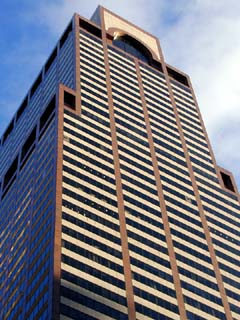Your New Year's Resolution
Several of my friends and colleagues joined me.
Well, we're 355/365ths of the way through the year. How did I do?
Very well, if I say so myself. I've missed two days this year--the day before Thanksgiving, and Big Game day (and I later made most of those up). So far, I've done over 63,000 pushups and crunches.
Of course, my body has changed a lot. I don't have huge muscles by any stretch of the imagination, but I have definition like I've never had in my life. My wife is a big, big fan of this resolution!
I also have a tremendous sense of accomplishment. I never had to do anything difficult (even now, it's only about 20-25 minutes a day, and I tend to break it into 2 sessions)--but I've accomplished a great goal. As I said back in January, I wanted to see what I could accomplish through dedication, tenacity, and an incremental increase in effort.
As for my co-workers and friends, I don't think any of them has stuck with it entirely--but they have all changed their exercise program. Even though none is doing 355 pushups with me today, they're all doing something to improve themselves.
The Challenge
This has been a great experience for me. Now, I'm challenging you. Readers. Writers. Members of the blogosphere. Mostly, people whose blogs I read: It's time to think about what you are going to resolve next year. Why not do this one?
Savas and Pirillo: I know you both lost a lot of weight in 2006--maybe you're looking to firm up those newly svelted bodies? Shahar - how about getting the Excel Services team on board? Jim Benson, your cousin Robert sure did a lot of pushups this year; think you can top him next year? Brad Feld, you certainly know a thing or two about athletic goals (50 marathons in 50 states before he's 50), I'm sure you could do this without sweating. Carl Franklin, you think .NET rocks, but did you know that pushups rock? Dan Fay, Joe Duffy, Mark Schmidt, David Gainer: they won't be calling you Microsofties in 2007. Jason Follas, think you can manage 19 pushups the second day of CodeMash? Nick Carr, IT may be dead, but calisthenics are alive and kicking! And of course: Scoble made some big changes in 2006--how about making some more in 2007?
Challenge yourselves. Challenge each other. A pushup a day, that's all it takes. Pass it on.
Disclosure: I don't know most of the people I mentioned above, other than through RSS. As far as I know, you're all completely chiseled, do 500 pushups a day, and would laugh at the idea of doing fewer. No offense intended.
The Advice
I have a couple of pieces of advice for anyone who decides to try it. First, make the "workout" part of your routine. For me, that meant setting my alarm clock ten minutes early to give myself time for pushups and crunches. Getting my pushups and crunches out of the way that early in the day makes it much easier for me; the worst days are the days when I realize that I still "owe" pushups right before bed! Until the last couple of months, it really doesn't take more than 10 or 15 minutes.
Second - involve other people. After I got into this, 5 of my co-workers and friends started, too. We all served to goad each other along (sometimes we "guilted" each other along). But you definitely are more likely to make up missed pushups at the office if there is more than one of you doing it! It wasn't uncommon this year to walk into our office and see 3 or 4 people on the ground doing a set of pushups. Side note--of the six of us, I'm the only one who will be completing the challenge. But, while the other five didn't do 352 pushups this morning, they're all still doing calisthenics every day and are in much better shape than they started the year.
Third - when the numbers get higher, break it up if you need to. I did single sets of pushups until about day 60. Now, I do sets of 75 pushups and about 120 crunches. If I don't have time to do them all in the morning, I'll just do one or two sets, then I'll do the rest during the day. It's easy to find two minutes here and there throughout the day.
Fourth, and most importantly: if you miss a day, don't quit! Ideally, you can make it up later (that's especially easier earlier in the year--it's a bit harder when it would mean doing 600 pushups in one day). Even if you can't make it up, get right back on the horse that next day. Don't let more than one day go by, or you'll fall out of the good routine you established.
What's Next?
Now that I'm nearing my goal, I have to figure out what's next. I still haven't. I may add pullups and chinups to my daily routine, or I may resolve something that involves riding my bike. Any suggestions?
After this week, I'm heading off to Tucson to see my mom and my in-laws, so I'll be offblog for the rest of the year. Happy New Year, and I'll see you on January 2nd (or, as you'll be calling it, "Day Two").
Good luck!







